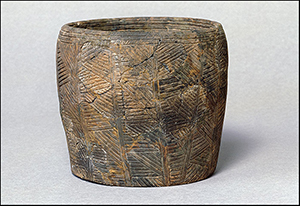Crossref Citations
This article has been cited by the following publications. This list is generated based on data provided by Crossref.
Dreslerová, Dagmar
Kozáková, Radka
Metlička, Milan
Brychová, Veronika
Bobek, Přemysl
Čišecký, Čeněk
Demján, Peter
Lisá, Lenka
Pokorná, Adéla
Michálek, Jan
Strouhalová, Barbora
and
Trubač, Jakub
2020.
Seeking the meaning of a unique mountain site through a multidisciplinary approach. The Late La Tène site at Sklářské Valley, Šumava Mountains, Czech Republic.
Quaternary International,
Vol. 542,
Issue. ,
p.
88.
Dunne, J.
Chapman, A.
Blinkhorn, P.
and
Evershed, R.P.
2020.
Fit for purpose? Organic residue analysis and vessel specialisation: The perfectly utilitarian medieval pottery assemblage from West Cotton, Raunds.
Journal of Archaeological Science,
Vol. 120,
Issue. ,
p.
105178.
Tarifa-Mateo, N.
Regert, M.
Craig, O.E.
Rosell-Melé, A.
Clop, X.
and
Saña, M.
2021.
Pottery use in the mining site of variscite Mines de Gavà (Barcelona, Spain) during the 4th millennium BC based on organic residue analysis.
Journal of Archaeological Science: Reports,
Vol. 38,
Issue. ,
p.
103080.
Mitchell, Piers D.
Anastasiou, Evilena
Whelton, Helen L.
Bull, Ian D.
Parker Pearson, Mike
and
Shillito, Lisa-Marie
2022.
Intestinal parasites in the Neolithic population who built Stonehenge (Durrington Walls, 2500 BCE).
Parasitology,
Vol. 149,
Issue. 8,
p.
1027.
Parameswaran, Gopakumar
Jayaram, Vikram
and
Kailas, Satish V.
2023.
Frictional Characteristic Curves of Ground Surfaces in Lubricated Sliding.
Lubricants,
Vol. 11,
Issue. 9,
p.
354.


